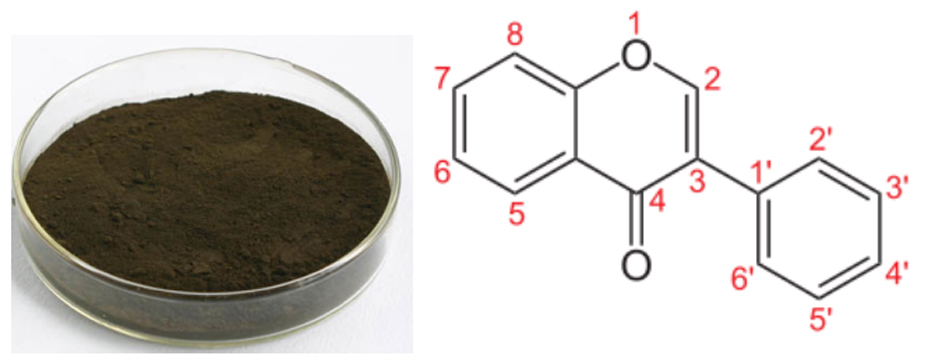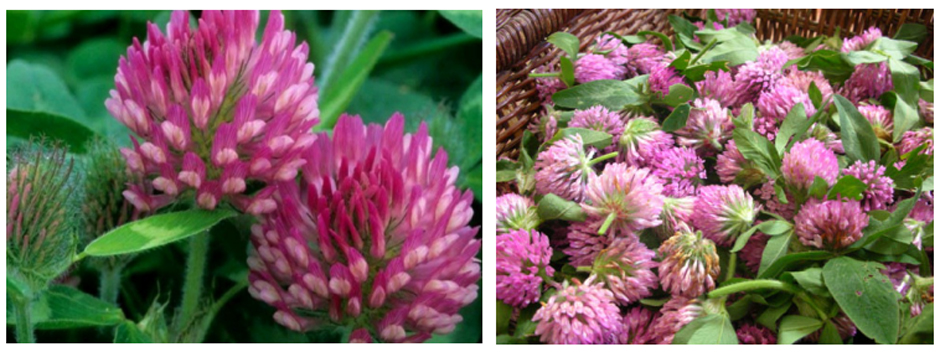14 Years Manufacturer Red clover extract Factory for Manchester
14 Years Manufacturer Red clover extract Factory for Manchester Detail:
[Latin Name] Trifolium pratensis L.
[Specification] Total isoflavones 20%; 40%; 60% HPLC
[Appearance] Brown to tan fine powder
Plant Part Used: Whole herb
[Particle size] 80Mesh
[Loss on drying] ≤5.0%
[Heavy Metal] ≤10PPM
[Storage] Store in cool & dry area, keep away from the direct light and heat.
[Shelf life] 24 Months
[Package] Packed in paper-drums and two plastic-bags inside.
[Net weight] 25kgs/drum
[What is Red Clober]
Red clover is a member of the legume family – the same class of plants where we find chickpeas and soybeans. Red clover extracts are used as dietary supplements for their high content of isoflavone compounds – which possess weak estrogenic activity and have been associated with a variety of health benefits during menopause (reduction of hot flashes, promotion of heart health and maintenance of bone density).
[Function]
1. Red Clover Extract can Improving health, anti-spasm, known for healing properties.
2. Red Clover Extract can Treating the skin diseases (such as eczema, burns, ulcers, psoriasis),
3. Red Clover Extract can Treating respiratory discomfort (such as asthma, bronchitis, intermittent cough)
4. Red Clover Extract can Owning anti-cancer activity and prevention of prostate disease.
5. Red Clover Extract can Most valuable of its estrogen-like effect and alleviate breast pain suffering.
6. Red Clover Extract can Contained red clover isoflavones plays in a weak estrogen, estrogen reduces the number and thusalleviate the suffering.
7. Red Clover Extract can Maintaining bone mineral density in postmenopausal women
8. Red Clover Extract can Raising high density lipoprotein cholesterol.
Product detail pictures:

Related Product Guide:
We provide fantastic energy in top quality and advancement,merchandising,gross sales and marketing and operation for 14 Years Manufacturer Red clover extract Factory for Manchester , The product will supply to all over the world, such as: Saudi Arabia, St. Petersburg, Guatemala, Our domestic website's generated over 50, 000 purchasing orders every year and quite successful for internet shopping in Japan. We would be happy to have an opportunity to do business with your company. Looking forward to receiving your message !
เวชสำอางนาโนเทคโนโลยี Vitistra เป็นนวัตกรรมลดอนุภาคด้วยวิธีdilution ให้มีขนาดไม่เกิน 100 นาโนเมตรโดยไม่ใช้เครื่องมือ เพื่อลดต้นทุนและลดการใช้ทรัพยากร โดยนวัตกรรมนี้ทำให้สารออกฤทธิ์มีความคงตัว และสามารถนำส่งสารสำคัญเข้าสู่ผิวหนังได้ลึกและตรงจุดของปัญหาผิวพรรณ ผ่านการทดสอบจากแพทย์ผิวหนัง สถาบัน Dermscan Asia
และสารสกัดเมล็ดองุ่นยังมี oligomeric proanthocyanidin (opc) สูง ช่วยลดเลือนฝ้า กระ จุดด่างดำ และปรับสภาพผิวให้เรียบเนียน
#Vitistraเวชสำอางนาโนกู้หน้าสวยด้วยงานวิจัย
How to fade acne scars face with a simple, natural homemade whitening mask! So easy and chap, try out this skincare DIY!
********************** FAQ! *************************
“How long do I have to leave this mask on for?”
- Only about 10-15 minutes. You could leave it on for longer, but generally masks really only need to stay on for 10-15 minutes at a time.
“How often should I use this mask?”
- I would say 1-2 times a week should be sufficient. I have used it for a month straight before, but I do not recommend that! You need to judge for yourself what your skin can handle.
“How long does it take to WORK? When will I notice a difference in my skin?”
- Personally, I noticed a difference the first time I used it. This mask will NOT help scars that are deep in the skin (‘pot hole’ acne scars), but it will have an effect on hyper-pigmentation (red scars & marks). You should notice a difference over 2-3 months with continued use. Keep in mind that hyper-pigmentation does naturally fade over time, too.
“Can I use baking POWDER?”
- Nope! Baking powder is something different, so don’t use it!
“What about baking SODA?”
- Yep, sure can! Baking soda and bi-carb soda are the same thing, just called differently depending on the country you are from (in Aussie land, it’s called bi-carb soda, in America land it’s called baking soda)
“I can’t find TEA-TREE OIL anywhere? Where do I get it from?”
- I got mine from a supermarket in the same aisle band-aids and medications are, so try there. Otherwise, try your local drug store, pharmacy or chemist, as they should have it. It is an antiseptic, and can be used to clean wounds!
“Do I have to use tea-tree oil?”
- Not at all! It is an ‘optional extra’. I use it because I like how it has anti-bacterial properties, which is great if you have active pimples. But it is definitely not required!
***************************************************
ACNE & SKIN CARE VIDEO LINKS!
“How to : Remove deep acne scars”
“BEST drugstore acne products & treatments 2012/2013!”
This video is based on one I watched by Secret Life of a Bio nerd over a year ago (I can’t seem to find the video now tho, if you find it let me know!)
I have tried this for quite a number of months, and at one point I was putting this on pretty much every day for a month! I do not recommend that unless you have very severe scarring and you know what your skin is like.
Also, I usually use this mask with no water, just lemon juice, but for the sake of the video I used water. Again, know your skin type, don’t do something that causes a reaction or something your skin cannot handle! ![]()
Please keep in touch, comment, share and SUBSCRIBE! It’s free! ♥
Take care guys!
xx Jess
Music: “Sidewalk” https://audionautix.com/html/rock_pop_blues.html and “Custom breakZ – Game Controller” https://soundcloud.com/custom_breakz/custom-breakz-game
DISCOUNT CODES + LINKS:
► 70% off vegan & cruelty-free makeup brushes, use ‘JBRUSHES’ at checkout: https://goo.gl/CI7ipP
► 70% off ’The Ultimate Skin Spa’ exfoliation brush set! https://goo.gl/zoslLR
► 70% off ‘Spin for Perfect Skin’! https://goo.gl/zKuP0r
► 50% off replacement heads, use ‘J2REPLACE’ at checkout https://goo.gl/jRdEau
► 10% off your first order with iherb! https://goo.gl/enlkt5
FOLLOW ME:
W E B S I T E : https://www.jessbunty.com
I N S T A G R A M : https://instagram.com/jess_bunty
F A C E B O O K : https://www.facebook.com/jessbunty
T W I T T E R : https://twitter.com/#!/jess_bunty
S N A I L M A I L : PO BOX 245, Biggera Waters, Queensland, 4216, Australia
★ What I use to film:
Canon 700D kit – https://amzn.to/2fbyATX
(Canon T5i in America – https://amzn.to/2egW38D )
Studio Umbrella Lighting kit – https://amzn.to/2fyQ8xB
32GD SD cards – https://amzn.to/2egVMCD
Final Cut Pro X
A little about me:
In short, I’m a YouTube addicted procrastinator. At some point I decided to start making videos instead of just watching them, and here we all are, many years later and only slightly wiser. I’ve also been #blessed with adult hormonal acne, so a lot of my videos deal with all the fun stuff that comes along with that, like acne scarring and acne treatments. But since this is my personal channel, you’ll also find vlogs and chit-chat videos, which will probably all sound much the same as this blurb. So, thanks for reading, and if you like what you see then I’ve got more words and pictures on my blog https://www.jessbunty.com
My Skin Type: oily and acne-prone. I suffer from hormonal acne along my jawline, chin and neck.
A note about links: Some links I use are affiliate links. I only encourage using links to products or services I personally back. If you use my links, you’re helping to support the growth of this channel and the content I make here, and I cannot thank you enough!
In China, we have purchased many times, this time is the most successful and most satisfactory, a sincere and realiable Chinese manufacturer!






